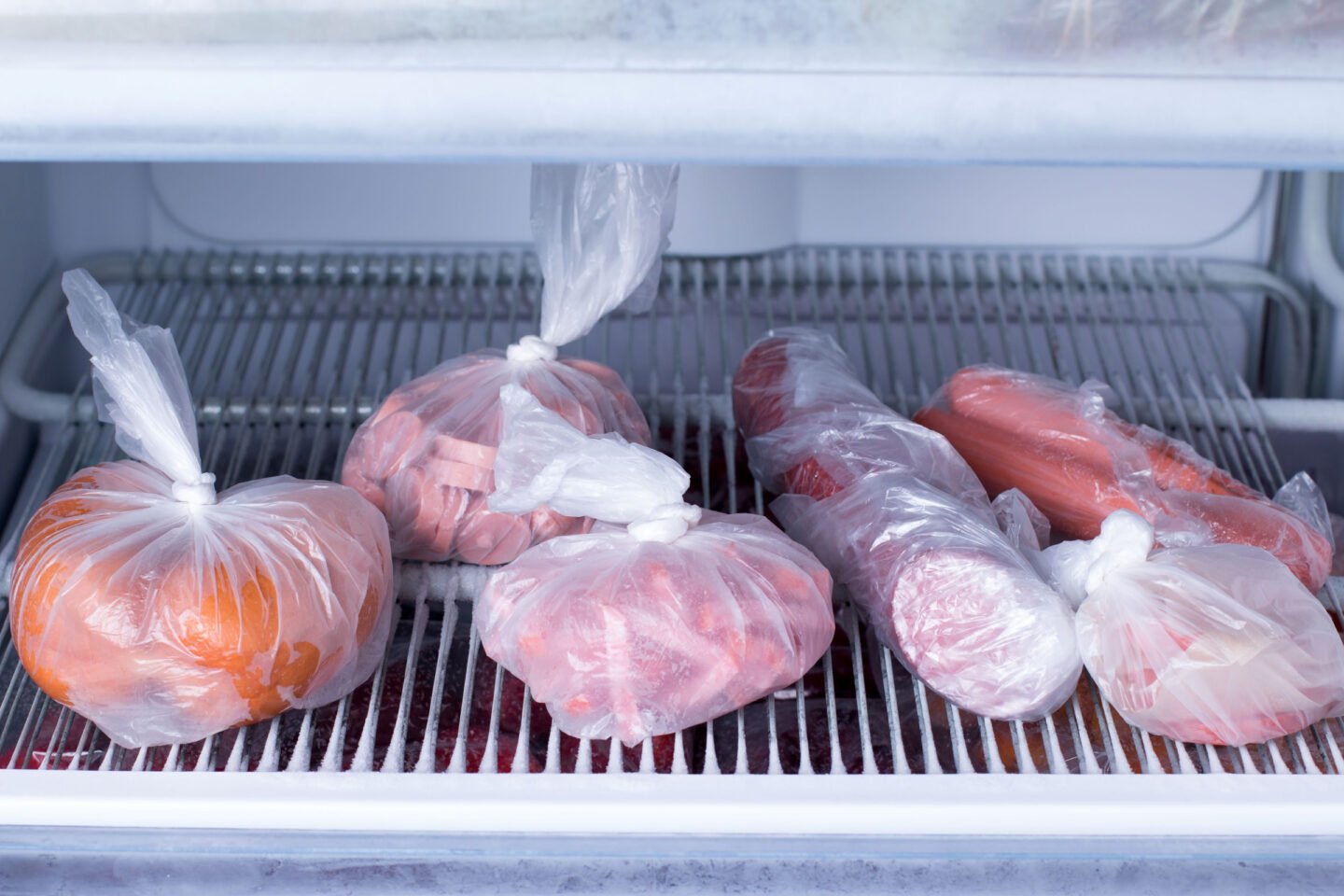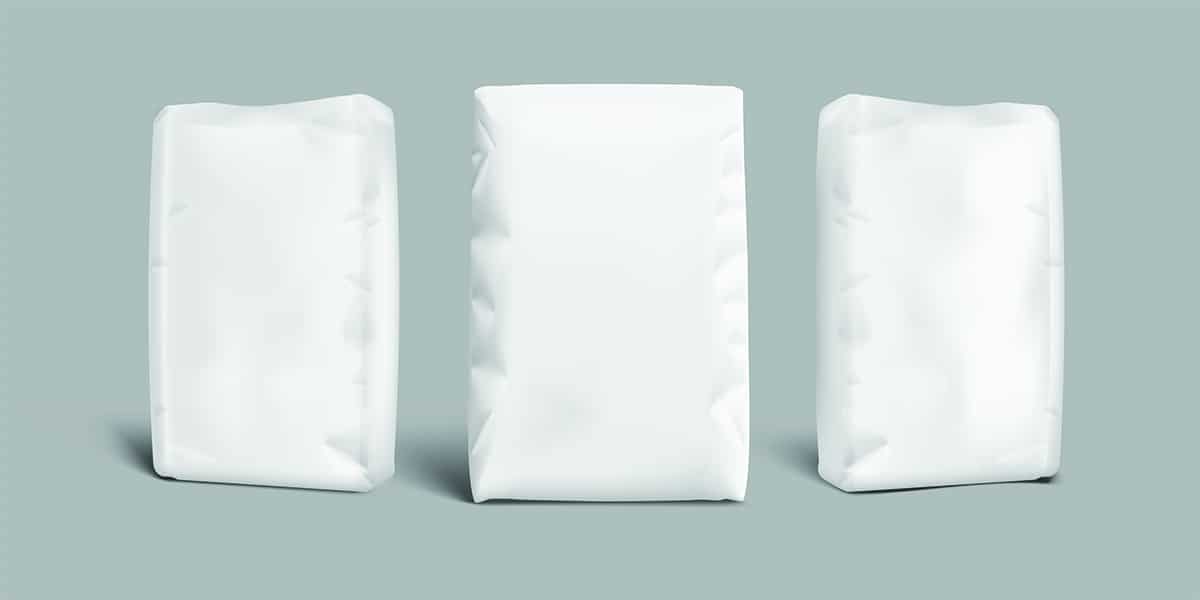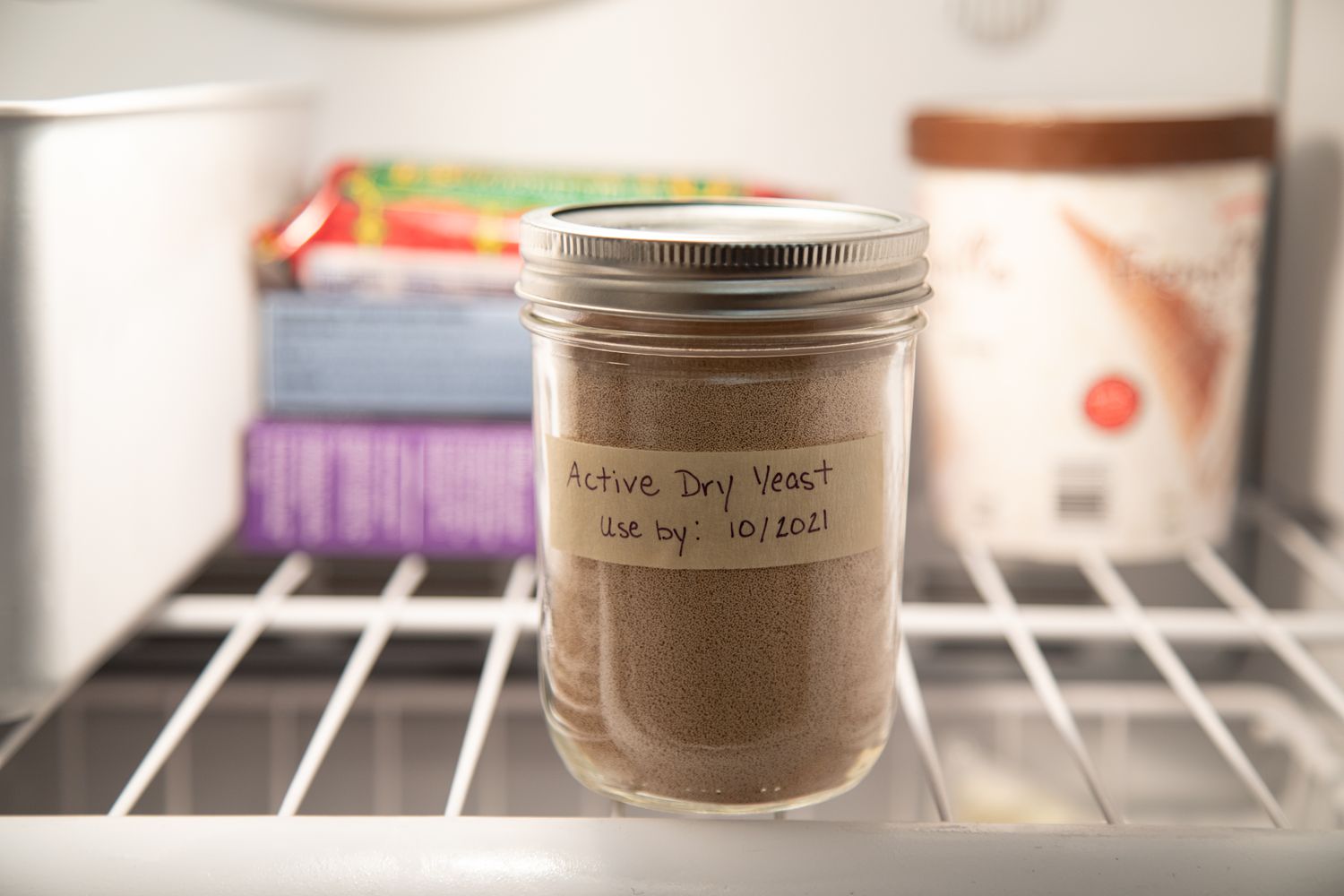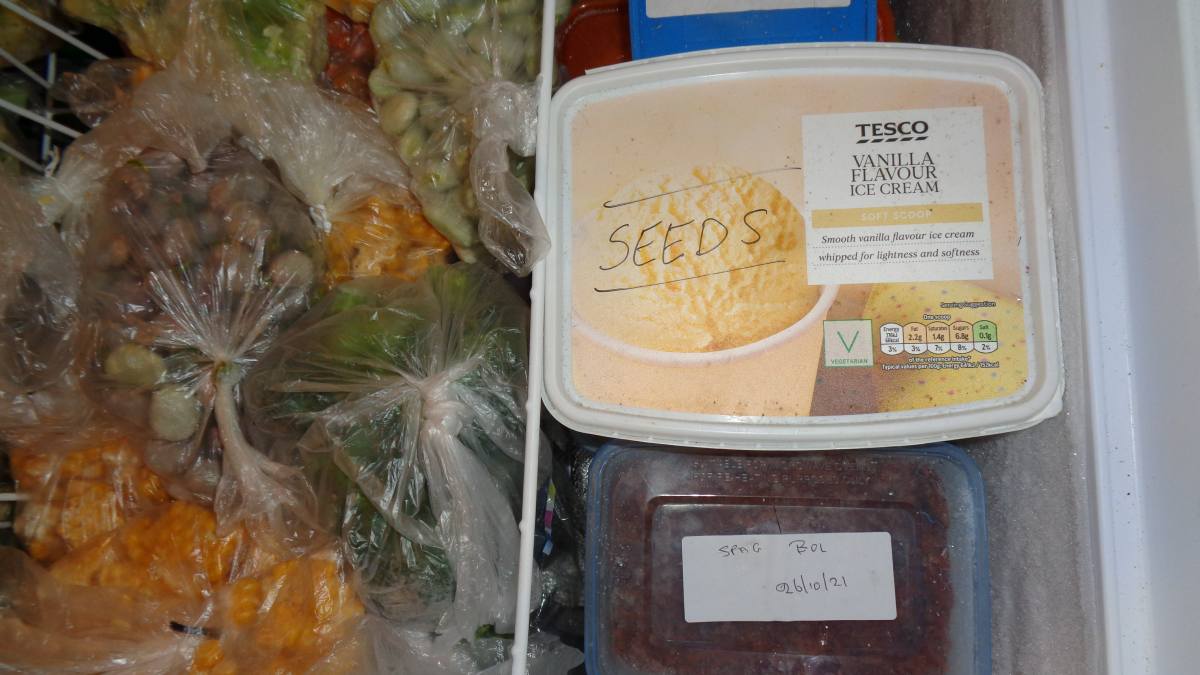

Articles
How Long Will A Ham Last In The Freezer
Modified: January 6, 2024
Discover how long a ham can last when stored in the freezer. Read our informative articles for expert tips and guidelines on freezing ham effectively.
(Many of the links in this article redirect to a specific reviewed product. Your purchase of these products through affiliate links helps to generate commission for Storables.com, at no extra cost. Learn more)
Introduction
Ham is a popular and versatile meat that is loved by many. Whether it’s for a holiday feast, a sandwich filling, or a special dinner, ham is a delicious addition to any meal. However, what happens when you have too much ham and need to store it for an extended period of time? That’s where the freezer comes in.
The freezer is a handy tool for extending the shelf life of many foods, including ham. By properly freezing and storing ham, you can ensure that it remains safe to eat and maintains its quality for an extended period of time. However, it’s important to know the proper techniques and guidelines for freezing ham to maximize its shelf life and prevent spoilage.
In this article, we will explore the factors that affect the shelf life of ham in the freezer, discuss proper freezing techniques, and provide packaging and storage guidelines. Additionally, we will cover the signs of spoilage in frozen ham, recommended freezer storage times for different types of ham, and offer tips for extending the freezer life of ham. So, let’s dive in and learn how to keep your frozen ham fresh and delicious for as long as possible.
Key Takeaways:
- Properly freezing and storing ham is essential for maintaining its quality. Follow recommended freezer storage times and be aware of signs of spoilage to enjoy delicious ham for an extended period.
- Use proper freezing techniques, packaging, and storage guidelines to extend the freezer life of ham. Label and date packages, and follow FIFO method for organized storage.
Read more: How Long Will Pecans Last In The Freezer
Factors Affecting the Shelf Life of Ham in the Freezer
When it comes to prolonging the shelf life of ham in the freezer, certain factors come into play. Understanding these factors can help you make informed decisions about freezing and storing your ham. Here are some key factors to consider:
- Quality of the Ham: The quality of the ham before freezing has a significant impact on its shelf life. If you start with fresh, high-quality ham, it is more likely to maintain its taste and texture during freezing.
- Freezing Technique: The way you freeze the ham can also affect its shelf life. Rapid freezing is recommended to minimize the formation of large ice crystals, which can damage the texture of the meat. Using a freezer that maintains a temperature of 0°F (-18°C) or below is crucial for optimal results.
- Packaging: Proper packaging is essential to prevent freezer burn and maintain the quality of the ham. Wrap the ham tightly in plastic wrap or aluminum foil, or place it in airtight freezer bags, removing as much air as possible. Consider double-wrapping the ham to provide an extra layer of protection.
- Storage Conditions: The conditions in which the ham is stored in the freezer can impact its shelf life. Ensure that your freezer is clean, organized, and set to the optimal temperature. Avoid frequent temperature fluctuations, as they can compromise the quality of the ham.
- Storage Duration: The length of time you store the ham in the freezer will also play a role in its shelf life. While freezing can significantly extend the storage time of ham, it is important to note that even frozen foods have an eventual deterioration in quality. Therefore, it is best to consume the frozen ham within a reasonable time frame.
By taking these factors into account, you can ensure that your frozen ham maintains its quality and remains safe to eat for an extended period of time. In the next section, we will delve into the proper techniques for freezing ham to maximize its shelf life.
Proper Freezing Techniques for Ham
Properly freezing ham is crucial for maintaining its quality and maximizing its shelf life in the freezer. Follow these steps to ensure that your ham stays fresh and delicious:
- Preparation: Before freezing the ham, make sure it is cooked thoroughly. This helps to kill any bacteria and ensures safe consumption after thawing. Allow the cooked ham to cool completely before moving on to the next step.
- Slice or Leave Whole: Decide whether you want to freeze the ham as whole pieces or slice it before freezing. Slicing the ham before freezing can make it easier to thaw and use smaller portions later on. However, if you prefer to keep it as a whole, ensure that it is properly wrapped to prevent freezer burn.
- Wrap Tightly: Wrap the ham tightly in plastic wrap or aluminum foil. Make sure there are no gaps or exposed areas to prevent freezer burn. For extra protection, you can place the wrapped ham in a resealable freezer bag or airtight container.
- Label and Date: Before placing the wrapped ham in the freezer, label it with the date of freezing. This will help you keep track of its storage time and ensure that you use it within the recommended timeframe.
- Store at Optimal Temperature: Place the wrapped ham in the coldest part of the freezer, where the temperature remains consistent. Ideally, the freezer temperature should be set at 0°F (-18°C) or below to ensure optimal preservation.
By following these proper freezing techniques, you can ensure that your ham retains its texture, flavor, and quality for an extended period of time in the freezer. In the next section, we will cover packaging and storage guidelines for frozen ham.
Packaging and Storage Guidelines for Frozen Ham
Proper packaging and storage are essential for maintaining the quality and preventing freezer burn in frozen ham. Here are some guidelines to follow:
- Double Wrapping: To provide extra protection against freezer burn, consider double-wrapping your frozen ham. Wrap it tightly in plastic wrap or aluminum foil, ensuring there are no air pockets. Then place it in a resealable freezer bag or airtight container.
- Portion Control: If you have sliced the ham before freezing, divide it into smaller portions that you can easily thaw and use as needed. This prevents you from having to thaw the entire ham if you only need a small portion.
- Labeling: Label the packaged ham with the date of freezing to keep track of its storage time. If you have divided it into smaller portions, label each package individually for convenience.
- Storage Location: Store the packaged ham in the coldest and most consistent part of the freezer. Avoid placing it near the freezer door, as it is more prone to temperature fluctuations. It is also a good idea to keep the ham away from strong-smelling foods to prevent flavor transfer.
- Organization: Keep your freezer organized by placing the oldest packages of ham towards the front. This way, you will use them first and minimize any potential food waste.
- Safe Storage Duration: While frozen ham can be stored for an extended period, it is best to consume it within 2 to 3 months for best quality. After this time, the ham may still be safe to eat but may start to lose its texture and flavor.
By following these packaging and storage guidelines, you can ensure that your frozen ham stays fresh, flavorful, and free from freezer burn. In the next section, we will discuss the signs of spoilage to look out for in frozen ham.
Signs of Spoilage in Frozen Ham
While freezing can preserve the quality and extend the shelf life of ham, it’s important to be aware of the signs of spoilage to ensure food safety. Here are some indicators that your frozen ham may have spoiled:
- Freezer Burn: Freezer burn occurs when moisture evaporates from the surface of the ham, causing it to appear dry or discolored. If you notice freezer burn on your frozen ham, it is a sign that the quality has been compromised. While it may still be safe to eat, the texture and taste may be affected.
- Off Odor: If your frozen ham gives off a strange or unpleasant odor when thawing, it could be a sign of spoilage. Fresh ham should have a mild, ham-like odor. Any foul or rancid smell indicates that the ham may have gone bad.
- Unusual Texture: Frozen ham that has developed an unusual texture, such as excessive mushiness, sliminess, or an odd grainy texture, may be an indication of spoilage. Ham should have a firm and smooth texture when properly frozen.
- Mold Growth: While it is rare for mold to grow on frozen food, if you notice any visible mold on your ham, it is a clear sign of spoilage. Do not consume the ham if mold is present.
- Change in Color: Any noticeable changes in the color of your frozen ham, such as darkening or a greenish hue, may indicate spoilage. Fresh ham should have a pink or reddish color. Any significant discoloration should be cause for concern.
- Unpleasant Taste: If your frozen ham tastes off or has a sour or bitter flavor, it is likely spoiled. Trust your taste buds and discard any ham that doesn’t taste as expected.
If you observe any of these signs of spoilage in your frozen ham, it is best to err on the side of caution and discard it. Consuming spoiled food can lead to foodborne illnesses. However, if the ham appears and smells normal after thawing, it is likely safe to eat.
In the next section, we will provide recommended freezer storage times for different types of ham to guide you in determining how long you can store your frozen ham.
When properly stored in the freezer, a whole ham can last for 1 to 2 months, while a ham that has been sliced can last for 1 to 2 weeks. Be sure to wrap it tightly to prevent freezer burn.
Read more: How Long Will Jerky Last In The Freezer
Recommended Freezer Storage Time for Different Types of Ham
Knowing the recommended freezer storage time for different types of ham helps you understand how long you can safely store them without compromising quality. Here are the general guidelines for different types of ham:
- Fully Cooked Ham: Fully cooked hams, such as spiral-cut or boneless hams, can be safely stored in the freezer for up to 2 to 3 months. However, for best quality, it is recommended to consume them within 1 to 2 months.
- Partially Cooked Ham: Partially cooked hams, also known as cook-before-eating hams, should be consumed within 2 to 3 weeks after freezing. These hams require further cooking before they are safe to eat.
- Uncooked Fresh Ham: Fresh, uncooked hams can be stored in the freezer for up to 6 to 8 months. However, it is best to consume them within 4 to 6 months for optimal quality.
- Cured Ham: Cured hams, such as country ham and prosciutto, have a longer shelf life in the freezer. They can be stored for up to 1 year without significant quality deterioration.
- Ground Ham: Ground ham, which is often used in sandwiches or recipes, can be stored in the freezer for up to 2 to 3 months. It is recommended to consume it within 1 to 2 months for best results.
Please note that these storage times are general guidelines and can vary depending on the quality of the ham, freezing conditions, and personal preferences. Always use your best judgment and trust your senses when determining the freshness and safety of frozen ham.
Now that you have an idea of how long you can store different types of ham in the freezer, let’s move on to some tips for extending the freezer life of ham.
Tips for Extending the Freezer Life of Ham
If you want to maximize the freezer life of your ham and preserve its quality for as long as possible, here are some tips to keep in mind:
- Properly package and seal: Ensure that your ham is tightly wrapped in plastic wrap or foil to prevent air exposure and freezer burn. Use airtight freezer bags or containers for added protection.
- Remove excess air: When packaging the ham, eliminate as much air as possible from the wrapping or freezer bag. This helps prevent freezer burn and keeps the ham fresher for longer.
- Label and date: Always label your packaged ham with the date it was frozen. This allows you to keep track of its storage time and prioritize the use of older ham first.
- Keep a consistent freezer temperature: Maintain a constant temperature of 0°F (-18°C) or below in your freezer. Fluctuating temperatures can alter the quality of the ham and shorten its shelf life.
- Store in the coldest part: Place the ham in the coldest part of your freezer, usually towards the back or floor. This area maintains a more stable temperature, reducing the risk of temperature fluctuations.
- Organize your freezer: Keep your freezer well-organized, with older packages of ham in the front and newer ones towards the back. This ensures that you use the oldest ham first, minimizing any potential waste.
- Don’t refreeze thawed ham: Once you have thawed frozen ham, do not refreeze it. This can lead to a loss of quality, texture, and taste.
- Thaw with care: When you are ready to use the frozen ham, thaw it in the refrigerator or using the defrost function on your microwave. Thawing slowly and safely helps preserve the quality and taste of the ham.
- Use the FIFO method: FIFO stands for “first in, first out.” When taking out ham for consumption, follow the FIFO method by using the oldest packages first to ensure you enjoy the ham before it reaches its maximum freezer storage time.
By following these tips, you can extend the freezer life of your ham and enjoy it at its best quality for an extended period of time. Now, let’s move on to the frequently asked questions about freezing ham.
Frequently Asked Questions (FAQs)
Here are some commonly asked questions about freezing ham:
1. Can you freeze a ham that has already been cooked?
Yes, you can freeze a ham that has already been fully cooked. Make sure to cool the ham completely before wrapping and freezing it.
2. Can you freeze ham slices?
Yes, you can freeze ham slices. It is recommended to slice the ham before freezing if you plan to use smaller portions. Wrap the slices tightly in plastic wrap or place them in an airtight container.
3. How long can you freeze ham?
The recommended freezer storage time for ham varies depending on the type. Fully cooked ham can be frozen for 2 to 3 months, while uncooked fresh ham can safely be stored for 6 to 8 months. Cured ham has a longer freezer life and can be stored for up to a year.
4. How do you thaw frozen ham?
Thaw frozen ham in the refrigerator, allowing 24 hours of thawing time per 5 pounds (2.27 kg) of ham. Alternatively, you can use the defrost function on your microwave for smaller portions, following the manufacturer’s instructions.
5. Can you refreeze ham that has been thawed?
It is generally not recommended to refreeze ham once it has been thawed. Refreezing can affect the quality and texture of the meat.
6. How do you know if frozen ham has gone bad?
Signs of spoilage in frozen ham include freezer burn, an off odor, unusual texture, mold growth, changes in color, and an unpleasant taste. Trust your senses and discard any ham that shows signs of spoilage.
7. Can you freeze leftover cooked ham?
Yes, you can freeze leftover cooked ham. Make sure to cool the ham completely before wrapping and freezing it. Place it in an airtight container or wrap it tightly in plastic wrap or foil.
8. Can you freeze a whole ham in its original packaging?
It is not recommended to freeze a whole ham in its original packaging, as it may not provide sufficient protection against freezer burn. It is best to wrap the ham tightly in plastic wrap or foil before freezing.
9. Can you freeze ham bone for later use?
Yes, you can freeze the ham bone for later use. Wrap it tightly in plastic wrap or place it in a resealable freezer bag, and label it with the date before freezing.
10. Can you freeze ham salad?
It is not advisable to freeze ham salad, as the mayo-based dressing can separate and change in texture when frozen and thawed. It is best to consume ham salad fresh or refrigerate it for a short period of time.
I hope these frequently asked questions have provided helpful information about freezing ham. If you have any more questions, feel free to ask. Now, let’s conclude this article.
Conclusion
Properly freezing and storing ham is a great way to extend its shelf life and ensure that it remains safe and delicious for future use. By following the right techniques and guidelines, you can maintain the quality of your ham in the freezer and reduce food waste. Remember these key points:
Start with high-quality ham and ensure it is fully cooked before freezing. Properly wrap the ham in plastic wrap or aluminum foil, removing as much air as possible, and consider double-wrapping for added protection. Label the packages with the date of freezing to keep track of their storage time.
Store the ham in the coldest part of the freezer, away from temperature fluctuations. Keep your freezer well-organized, using the FIFO method to use the oldest packages first. Follow the recommended freezer storage times for different types of ham to ensure best quality.
Be aware of the signs of spoilage in frozen ham, such as freezer burn, off odor, unusual texture, mold growth, changes in color, and unpleasant taste. If you notice any of these signs, discard the ham to avoid foodborne illnesses.
By following these guidelines and tips, you can maximize the freezer life of your ham and enjoy its deliciousness even months later. Freezing ham allows you to have a convenient and tasty protein option on hand for various recipes or meals.
Remember to thaw frozen ham properly and use it within a reasonable time frame. Enjoy your frozen ham in sandwiches, soups, casseroles, and more!
We hope this article has provided you with valuable information on how to freeze and store ham effectively. If you have any more questions or need further assistance, feel free to reach out. Happy freezing!
Frequently Asked Questions about How Long Will A Ham Last In The Freezer
Was this page helpful?
At Storables.com, we guarantee accurate and reliable information. Our content, validated by Expert Board Contributors, is crafted following stringent Editorial Policies. We're committed to providing you with well-researched, expert-backed insights for all your informational needs.















0 thoughts on “How Long Will A Ham Last In The Freezer”